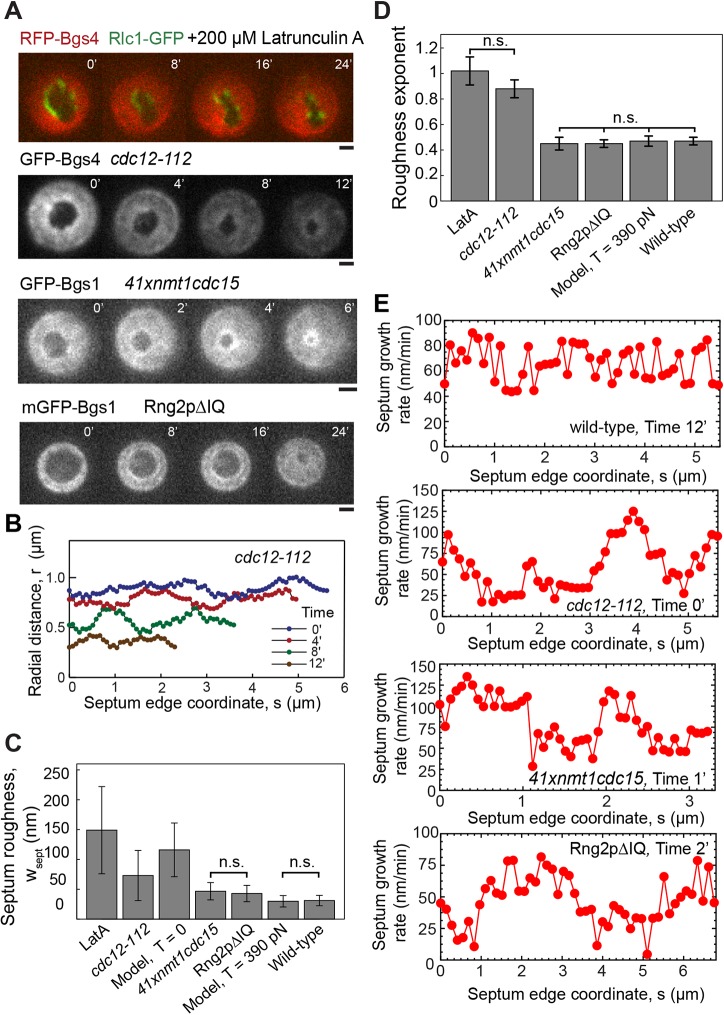Fig. 4.
Septa with abnormal roughness, deviations from circularity and inhomogeneous growth rates in cells treated with LatA or with mutations of contractile ring proteins. n.s. denotes that there were no statistically significant differences within the indicated group (P>0.05). (A) Confocal fluorescence micrographs of division planes during constriction in a wild-type yeast cell expressing RFP-Bgs4 and Rlc1-GFP and treated with 200 µM LatA, a cdc12-112 cell expressing GFP-Bgs4 and Rlc1-Tomato at the restrictive temperature, a 41xnmt1cdc15 cell expressing GFP-Bgs1p, Rlc1p-tdTomato and Sad1p-GFP, and a rng2Δ cell expressing mEGFP-Bgs1p, Sad1-RFP and complemented with Rng2pΔIQ. Times in minutes after the first frame. Scale bars: 1 µm. (B) Radial distance profiles of the septum edges in the cdc12-112 cell of A at four times. (C) Comparison of mean septum edge roughness in wild-type cells (Fig. 2B), the cases shown in A, and simulations with and without tension. Roughness was calculated from constrictions shown in Figs 2B, 3A, supplementary material Fig. S4A. Error bars indicate ±s.d. (D) Comparison of exponents of septum edge roughness for the same cases as shown in C, except for zero tension simulations. Exponents from Fig. 2C, supplementary material Fig. S4B,C. Error bars denote ±95% confidence intervals. (E) Septum growth rate versus edge coordinate s for the wild-type, cdc12-112, 41xnmt1cdc15 and Rng2pΔIQ cells as shown in Figs 1B and 4A. Growth rate is the mean value over an interval of 2 min (wild-type, 41xnmt1cdc15) or 3 min (cdc12-112, Rng2pΔIQ). Growth rates of cdc12-112, 41xnmt1cdc15 and Rng2pΔIQ cells show large systematic spatial fluctuations, unlike those of wild-type cells.

